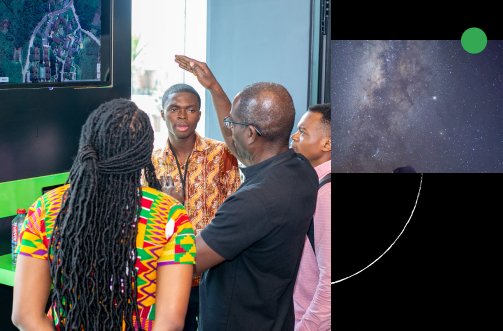
Thomas Colthurst
Authored Publications
Sort By
Earth AI: Unlocking Geospatial Insights with Foundation Models and Cross-Modal Reasoning
Aaron Bell
Aviad Barzilai
Roy Lee
Gia Jung
Charles Elliott
Adam Boulanger
Amr Helmy
Jacob Bien
Ruth Alcantara
Nadav Sherman
Hassler Thurston
Yotam Gigi
Bolous Jaber
Vered Silverman
Luke Barrington
Tim Thelin
Elad Aharoni
Kartik Hegde
Yuval Carny
Shravya Shetty
Yehonathan Refael
Stone Jiang
David Schottlander
Juliet Rothenberg
Luc Houriez
Yochai Blau
Joydeep Paul
Yang Chen
Yael Maguire
Aviv Slobodkin
Shlomi Pasternak
Alex Ottenwess
Jamie McPike
Per Bjornsson
Natalie Williams
Reuven Sayag
Thomas Turnbull
Ali Ahmadalipour
David Andre
Amit Aides
Ean Phing VanLee
Niv Efron
Monica Bharel
arXiv (preprint 2025), arXiv, arXiv:2510.18318
https://doi.org/10.48550/arXiv.2510.18318
(2025)
Preview abstract
Geospatial data offers immense potential for understanding our planet. However, the sheer volume and diversity of this data along with its varied resolutions, timescales, and sparsity pose significant challenges for thorough analysis and interpretation. The emergence of Foundation Models (FMs) and Large Language Models (LLMs) offers an unprecedented opportunity to tackle some of this complexity, unlocking novel and profound insights into our planet.
This paper introduces a comprehensive approach to developing Earth AI solutions, built upon foundation models across three key domains—Planet-scale Imagery, Population, and Environment—and an intelligent Gemini-powered reasoning engine. We present rigorous benchmarks showcasing the power and novel capabilities of our foundation models and validate that they provide complementary value to improve geospatial inference. We show that the synergy between these models unlocks superior predictive capabilities. To handle complex, multi-step queries, we developed a Gemini-powered agent that jointly reasons over our multiple foundation models along with large geospatial data sources and tools to unlock novel geospatial insights. On a new benchmark of real-world crisis scenarios, our agent demonstrates the ability to deliver critical and timely insights, effectively bridging the gap between raw geospatial data and actionable understanding.
View details
Preview abstract
We show how rational function approximations to the logarithm, such as
$\log z \approx (z^2 - 1)/(z^2 + 6z + 1)$,
can be turned into fast algorithms for approximating the determinant
of a very large matrix. We empirically demonstrate that these
algorithms are
under some circumstances better than existing state-of-the-art determinant
approximations for the matrices coming from several popular Gaussian
process kernels, including Matérn-$5/2$ and radial basis functions.
View details
DeepNull models non-linear covariate effects to improve phenotypic prediction and association power
Zachary R. Mccaw
Nicholas A. Furlotte
Andrew Carroll
Babak Alipanahi
Nature Communications (2022)
Preview abstract
Genome-wide association studies (GWASs) examine the association between genotype and phenotype while adjusting for a set of covariates. Although the covariates may have non-linear or interactive effects, due to the challenge of specifying the model, GWAS often neglect such terms. Here we introduce DeepNull, a method that identifies and adjusts for non-linear and interactive covariate effects using a deep neural network. In analyses of simulated and real data, we demonstrate that DeepNull maintains tight control of the type I error while increasing statistical power by up to 20% in the presence of non-linear and interactive effects. Moreover, in the absence of such effects, DeepNull incurs no loss of power. When applied to 10 phenotypes from the UK Biobank (n = 370K), DeepNull discovered more hits (+6%) and loci (+7%), on average, than conventional association analyses, many of which are biologically plausible or have previously been reported. Finally, DeepNull improves upon linear modeling for phenotypic prediction (+23% on average).
View details
DeepNull models non-linear covariate effects to improve phenotypic prediction and association power
Andrew Carroll
Babak Alipanahi
Zachary Ryan Mccaw
Nick Furlotte
Nature Communications (2022)
Preview abstract
Genome-wide association studies (GWAS) examine the association between genotype and phenotype while adjusting for a set of covariates. Although the covariates may have non-linear or interactive effects, due to the challenge of specifying the model, GWAS often neglect such terms. Here we introduce DeepNull, a method that identifies and adjusts for non-linear and interactive covariate effects using a deep neural network. In analyses of simulated and real data, we demonstrate that DeepNull maintains tight control of the type I error while increasing statistical power by up to 20% in the presence of non-linear and interactive effects. Moreover, in the absence of such effects, DeepNull incurs no loss of power. When applied to 10 phenotypes from the UK Biobank (n=370K), DeepNull discovered more hits (+6%) and loci (+7%), on average, than conventional association analyses, many of which are biologically plausible or have previously been reported. Finally, DeepNull improves upon linear modeling for phenotypic prediction (+23% on average).
View details
A universal SNP and small-indel variant caller using deep neural networks
Scott Schwartz
Dan Newburger
Jojo Dijamco
Nam Nguyen
Pegah T. Afshar
Sam S. Gross
Lizzie Dorfman
Mark A. DePristo
Nature Biotechnology (2018)
Preview abstract
Despite rapid advances in sequencing technologies, accurately calling genetic variants present in an individual genome from billions of short, errorful sequence reads remains challenging. Here we show that a deep convolutional neural network can call genetic variation in aligned next-generation sequencing read data by learning statistical relationships between images of read pileups around putative variant and true genotype calls. The approach, called DeepVariant, outperforms existing state-of-the-art tools. The learned model generalizes across genome builds and mammalian species, allowing nonhuman sequencing projects to benefit from the wealth of human ground-truth data. We further show that DeepVariant can learn to call variants in a variety of sequencing technologies and experimental designs, including deep whole genomes from 10X Genomics and Ion Ampliseq exomes, highlighting the benefits of using more automated and generalizable techniques for variant calling.
View details
